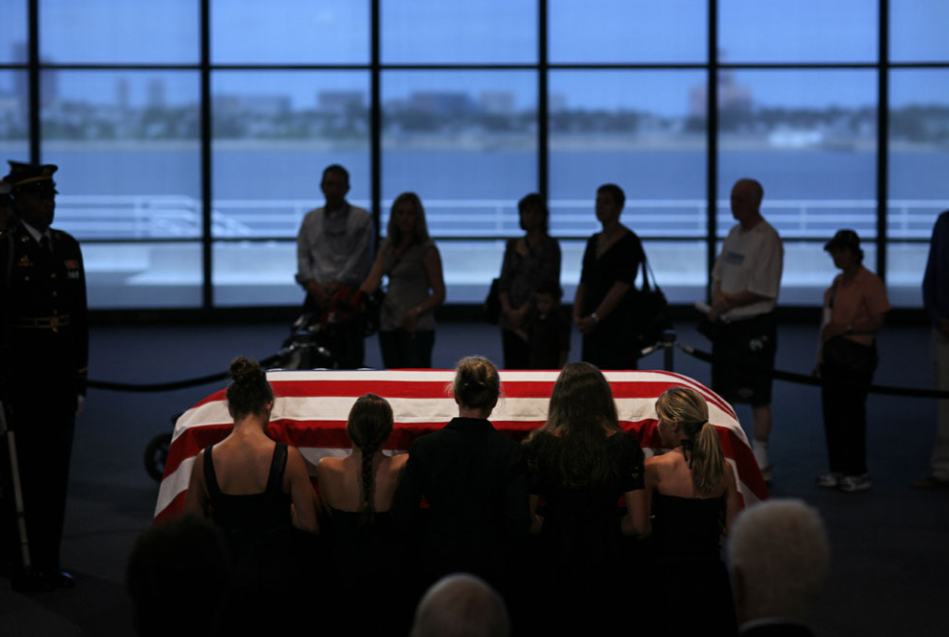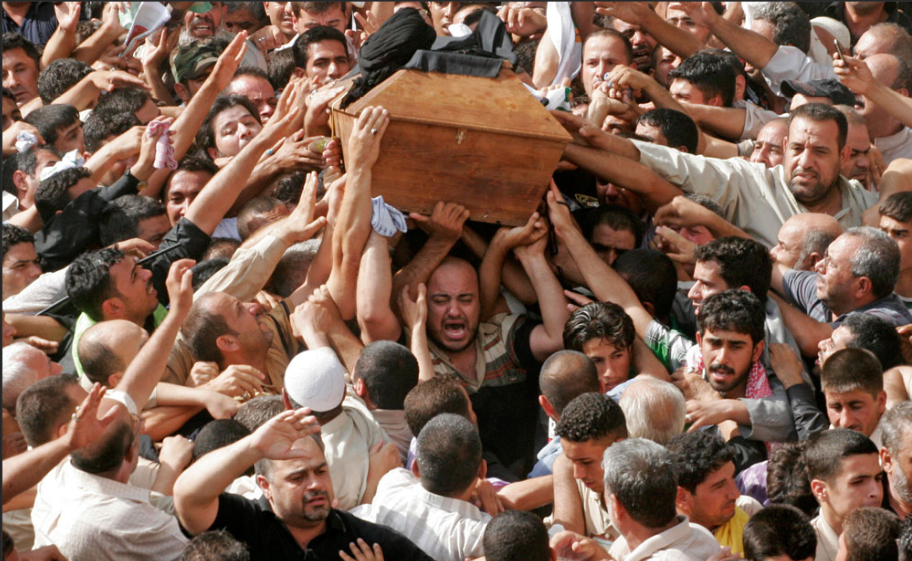Bearing the pall is an honored ritual in western funerary traditions according to which typically the most intimate friends and family members of the departed carry the casket that cloaks and contains the bodily remains. Until recently I thought of this as a rather instrumental ritual, activated largely by the pragmatic need to transport the body from one place to another in solemn and decorous fashion. This past spring, however, my mother passed away at the age of 83 and I came to realize the larger symbolic significance of literally touching the coffin, of making physical contact with the deceased, even if only by proxy and separated by the ritualistic container. I can’t say that I have the words to describe the actual feeling accurately, but there was something powerfully transcendent about it—almost as if I was making contact with a different plane of existence.
My experience was personal and private and I haven’t discussed it with anyone until now. Nevertheless, I was reminded of it by this photograph of Senator Edward Kennedy lying in repose at the JFK Presidential Library in Boston. The individuals kneeling at the coffin are five female family members, but in the visual tableau of the photograph they function as faceless surrogates for the thousands of anonymous members of the public who stood in line for hours just for the opportunity to pass the casket on the other side of a velvet rope and to pay their last respects to a life dedicated to national public service. The photograph underscores the solemnity of the occasion—heads bowed, hands folded, and notice how the pall is illuminated in a space otherwise shrouded by shadows cast by the backlit scene—but more than that it channels an ineffable, transcendent, affective sense of belonging that is arguably essential to communal life, animated here by decorously “touching” the coffin with our eyes.
The photograph above was the first image in the NYT’s “Pictures of the Day” for August 25, 2009. The second picture in that slide show was of the funeral procession for Abdul Aziz al-Hakim, an influential Shiite theologian and the leader of the Islamic Supreme Council of Iraq who had died of lung cancer.
The NYT employs the two photographs to make the point that “very different” leaders—one quintessentially western, the other quintessentially eastern—were mourned in “very different ways,” contrasting the rational and decorous “solemnity of the public farewell to Senator Kennedy” as “thousands of visitors continued to line up to pay their respects,” with the unfettered “emotion of the public farewell” to Abdul Aziz al-Hakim marked by the “thousands [who] poured into the streets amid tight security.”
And indeed, the normative differences and implications of the two photographs are surely pronounced, as one displays a scene that is apparently stately and reserved, a modicum of order and restraint, while the other purports to reveal a dangerous mob “pouring into the street” and warranting “tight security.” In one image the facial markers of emotional expression are hidden from view as the faces of the individuals cannot be seen, either turned away from the camera and directing attention to the coffin or veiled by distance and dark shadows. In the other image, however, shot in the harsh light of day, facial expressions of intense emotion are prominent and pronounced, not least the man in the very center of the image who appears to be bearing much of the weight of the coffin and crying out in grief. And there are other differences as well, as one image genders the public it displays as passively female, the other aggressively male.
And yet for all of the differences what stands out most in need of comment is the profound similarity between the two photographs as each indicates a ritual of mourning predicated on making a direct, affective connection between a surviving public and its deceased leaders as a performative, transcendent marker of civic identity. Call it “solemnity” or call it “emotion,” the simple fact is that communal life demands affective connections. If we are going to come to terms with the profound tensions between east and west we might not find a better place to start than in acknowledging and taking account of this radical similarity.
Photo Credits: Damon Winters/NYT; Loay Hameed/AP


As always a good point in your essayes…. and I hope that more people read this topic and get a better feeling about what humankind shares and not what divorces it…
Greetings from Hamburg/Germany
Benjamin
one of the best written and most thoughtful pieces on no caption yet. The similarity in function betwen the two photos is overwhelming, and you and Hariman are on regularly on point in regards to the importance of emotion in public life.
One question that arose in my reading is, how should we approach the juxtaposition of photographs? Should we read the similarities first and foremost, focusing on the general claim of the importance of affect for civic identity? Or should we focus on the differences, and the dangers associated with the NYT’s coding of the emotional display of the other as masculine and aggressive, as linking “irrational” emotion to non-Christian religious display? The coding of emotion in the first photo as feminine, passive, and constrained in times of mourning seems to go hand in hand with a reason-centered secular politics (and the corresponding dangers of gender or minority exclusion). I raise these questions not to criticize the above post, but to open a discussion about how visual rhetoric finds a balance between unmasking vested interests and educating readers/viewers about how they can or should look.
[…] circularize the box that cloaks and contains the corporeal remains. Here is the example post: Bearing the Public Pall | NO CAPTION NEEDED Posted in Uncategorized | Tags: and-family, bodily-remains-, carry-the-casket, casket, […]
Patrick: I think you are dead on correct. The key point is that the trope of “sameness” and “difference” always operate in tension with one another. One or the other is emphasized, but it almost never operates in the absence of its counterpart. And what is true of the trope in general is accented within photojournalistic practices that rely upon a realist aesthetic. The problem bears some similarity to the famous duck/rabbit example of perception made famous by gestalt psychology (and later by Wittgenstein). The duck/rabbit are always there, but depending upon some measure of emphasis–what you are prepared or inclined to see–you only see one and then have to work hard to reframe your focus to see the other. My initial assumption about the NYT slideshow was that it was underscoring difference, largely because their captions and accompanying narrative direct us to the key points of difference, and, of course, it is easy to accept and see that as more or less “natural” because it appeals to western assumptions and prejudices about the rational west and the emotional east. In short, it is what we are socialized and inclined to see. My goal with the post was to remind us that event though we are inclined to see the rabbit (animated by difference), there is a duck (animated by a profound similarity) lurking about in the images as well. The point is important NOT just as a matter of critique of what I think the NYT might have been doing (albeit with some likelihood more implicitly than anything else), but because I hope it calls attention to what photojournalism might be capable of … that is getting us to see both at once and thus to have an enriched understanding of the social and political problem before us. In this regard, here at NCN we think that photojournalism is a mode of “public art” and we want to encourage viewers and practitioners alike to treat it as such.
JLL